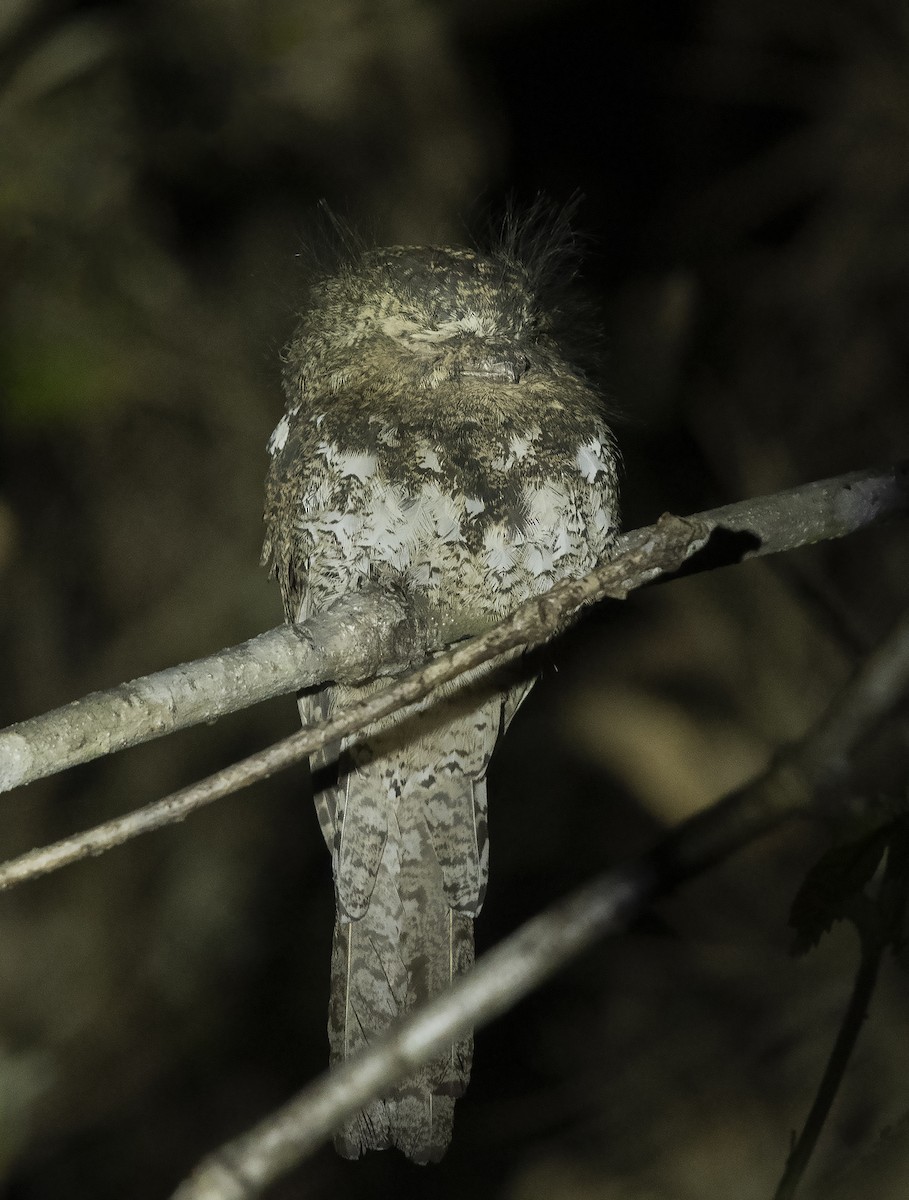Hodgson's Frogmouth
A species of Lesser Frogmouths Scientific name : Batrachostomus hodgsoni Genus : Lesser Frogmouths
Hodgson's Frogmouth, A species of Lesser Frogmouths
Botanical name: Batrachostomus hodgsoni
Genus: Lesser Frogmouths
Content
Description General Info
 Photo By Rofikul Islam
Photo By Rofikul Islam Description
Hodgson's frogmouth is one of the smaller members of the family Podargidae. As an adult, its length ranges between 24.5 and 27.5 centimetres (9.6 and 10.8 in) and it weighs approximately 50 grams (1.8 oz). The brown and gray plumage of this tropical bird resembles tree bark. This plumage is a soft and mottled cryptic plumage. The physical appearance differs from other species by a heavier black marking above breast as well as no rufous on breast. Hodgson's frogmouth is the most well-marked sexual dichromatic of all frogmouths. The male is rufous brown. Upper parts are heavily marked with black, especially on the head, with irregular bold whitish markings particularly on scapular and upper mantle which forms a white collar. Underparts are heavily and regularly marked with black, white and rufous. Female is more uniformly rufous, with irregular black-tipped white spots on the upper mantle, scapular and underparts. Males duller in color than females. Frogmouths are distinguishable by their large head and body compared to their small legs and feet. This feature blocks them from walking and make them exclusively arboreal. They have a thick large bill that takes the most part of their face and make them look like an angry old man. This strong bill is covered with rictal bristles at its base. These two last physical traits are others unique criteria of Frogmouth that make them look like an angry old man. The utility of the bristles on their face is much debated by biologists. The most popular hypothesis is that the bird would use them to detect insects and know when to close their bill shut on the invertebrates when this one is near the mouth. They have additional long facial bristles suspected to protect the eyes. Their large head and their bill also contain a pair of two large yellow-rounded eyes which help them to see in the dark during night times. The Asian bird possesses short round wings and tail which explain its very local territory. As they do not differ from other frogmouth except some slight color variation, the best way to identify Hodgson's frogmouth is by its call. Youngs are born with white down that is replaced by a darker, grayish down before juvenile plumage is acquired. They also have warm-tinged above with black and pale brown bars. They do not possess nuchal collar which only comes after primary molt. 
Size
27 cm
Nest Placement
Tree
Feeding Habits
Hodgson's Frogmouth primarily eats insects, favoring moths, beetles, and other large varieties. It hunts nocturnally from perches, employing short, sallying flights due to its compact wings and tail. Hodgson's Frogmouth is equipped with a strong bill and bristles for probing in tree bark to detect prey.
Habitat
Hodgson's Frogmouth is typically found in subtropical evergreen forests that occupy hilly terrains and the lower sections of montane areas. These habitats are characterized by a dominance of broad-leaved, evergreen trees, offering a lush canopy and intricate understory which cater to the species' roosting and foraging needs. The bird prefers regions that exhibit a balanced ecological composition, providing ample concealment and resources.
Dite type
Insectivorous
General Info
Feeding Habits
Bird food type
Distribution Area
The species arboreal is an adept of broad leaves evergreen or mixed coniferous tropical rain forests inside of which it will be found mainly on the middle and lower storeys. It is found in tropical regions of Asia at altitudes ranging from 300–1,900 metres (980–6,230 ft). The Podargidae is a non-migratory bird family as well as solitary individuals, the only social interaction happens during the breeding season where the individuals all converge in the Indian region between the month of April and June. The home range of the Hodgson's frogmouth consists of all tropical regions of Asia. Those region corresponds to the South of Asia, this is why it has been heard or seen in Sri Lanka, SE Asia, Indonesia, E Himalayas, NE India, Bangladesh, Laos, W,N,E Myanmar, NW Thailand, Laos, and C Annam. The first Hodgson's frogmouth in central Laos was recorded in 1994 during the month of April in a dry evergreen forest at 1000 m of altitude. The two subspecies are separated geographically between the Southeast and Southwest of Asia. B. h. hodgsoni lives more west in countries like Myanmar, India, and Bangladesh while B. h. indochinae dominates the region more east like Indonesia, Thailand and Laos. Species from the other genus Podargus are also located in Australia but that is not the case of the Batrachostomus species. 
Species Status
Two species from the Bratachostomus genus have been declining due to habitat fragmentation and habitat loss of lowland rain forest but the very large habitat at their disposition allow them to not approach the thresholds for Vulnerable under the range size criterion. Even though the population size has not been quantified, it is not believed to approach the criterion of a decline greater than 30% over ten years or three generations to be considered vulnerable. For these reasons the species is evaluated as Least Concern. 

 Photo By Rofikul Islam
Photo By Rofikul Islam Scientific Classification
Phylum
Chordates Class
Birds Order
Nightjars and Relatives Family
Frogmouths Genus
Lesser Frogmouths Species
Hodgson's Frogmouth